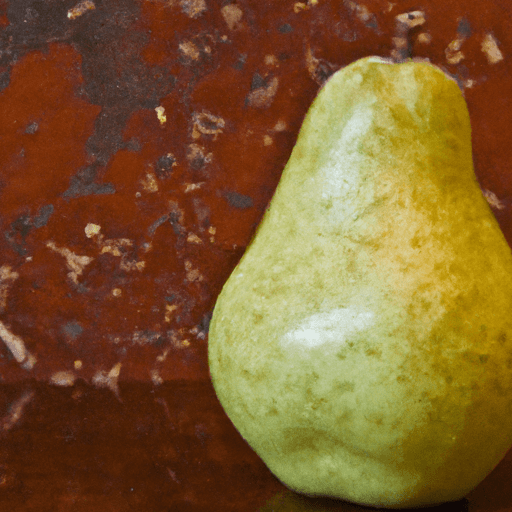Bartlett Pears: A Delightful Culinary Adventure
When it comes to versatile fruits, Bartlett pears take center stage. Known for their distinct buttery texture and sweet flavor, these pears are a beloved ingredient in the culinary world. Whether eaten raw or incorporated into various dishes, Bartlett pears never fail to tantalize taste buds, while simultaneously offering a variety of health benefits. Let’s dive deeper into the world of Bartlett pears and uncover their incredible culinary potential.
A Taste Sensation
One bite into a ripe Bartlett pear is enough to transport you to flavor paradise. These pears boast a juicy, meltingly soft flesh that offers a delicate and pleasing texture. The flavor profile of Bartlett pears can be described as subtly sweet with slight hints of citrus and floral undertones. The balance of sweetness and tanginess makes them a delightful addition to both sweet and savory dishes.
Versatile in the Kitchen
Bartlett pears demonstrate their culinary prowess by effortlessly pairing with an array of ingredients. Whether being the star of a dish or providing a supporting role, these versatile pears can be utilized in numerous cooking techniques. Here are a few popular ways to enjoy the magic of Bartlett pears in your kitchen:
1. Raw Delight
Bartlett pears are at their prime when enjoyed raw, allowing their natural flavors to shine. Simply slice them and savor their juicy goodness. Their subtly sweet taste makes them a fantastic addition to fruit salads or cheese platters, where their vibrant flavor can complement a variety of other ingredients.
2. Poached Perfection
Poaching Bartlett pears in a flavorful liquid, such as red wine or a spiced syrup, elevates their taste to new heights. The gentle cooking process infuses the pears with the accompanying flavors, resulting in a soft, succulent dessert. Serve them with a drizzle of the reduced poaching liquid and a dollop of vanilla ice cream for a stunning and indulgent treat.
3. Baked Bliss
Bartlett pears add a touch of elegance to baked goods. Incorporate them into cakes, muffins, tarts, or crumbles for a luscious burst of flavor and moist texture. The gentle heat of the oven brings out the pear’s natural sweetness and infuses the dessert with its unique essence.
Nutritional Bonuses
Not only are Bartlett pears a culinary delight, but they also offer an array of nutritional benefits. Packed with essential vitamins and minerals, these fruits can boost your overall well-being. Here are a few standout health benefits of Bartlett pears:
- Fiber-rich: Bartlett pears are a great source of dietary fiber, aiding in digestion and maintaining a healthy gut.
- Vitamin C: With a generous dose of vitamin C, these pears support a strong immune system and promote healthy skin.
- Potassium: Bartlett pears provide a substantial amount of potassium, which promotes heart health and helps regulate blood pressure.
Incorporating Bartlett pears into your cooking not only adds delicious flavor but also contributes to your overall health and well-being.
A Fruit with a Storied Past
The history of Bartlett pears dates back to the 18th century when they were discovered by a schoolmaster named Enoch Bartlett. He found these pears growing on his property in England and subsequently propagated them, leading to their widespread cultivation. In the United States, Bartlett pears gained popularity after being imported and planted by Enoch’s son in Massachusetts. Today, Bartlett pears are grown in various countries across the world and continue to be a beloved ingredient in kitchens worldwide.
Conclusion
Bartlett pears are undoubtedly a cherished treasure in the culinary realm. From their heavenly taste to their diverse applications in cooking, these pears have secured their place as a kitchen staple. Whether enjoyed raw, poached, or baked, Bartlett pears never fail to impress with their delightful flavor and versatile nature. So, elevate your culinary creations by incorporating the magic of Bartlett pears into your recipes and experience the wonders they bring to your table.
Note: When selecting Bartlett pears, ensure they are ripe by gently pressing near the stem. If it yields slightly, it’s ready to be enjoyed!
Bartlett Pears
Origin: Bartlett pears, also known as Williams pears, originated in England in the 17th century and were later introduced to North America in the 18th century.
Common Uses: Bartlett pears are versatile and can be used in both savory and sweet dishes. They are often enjoyed fresh, but can also be used in salads, pies, tarts, jams, and sauces. Additionally, they can be cooked or baked for various culinary applications.
Nutritional Benefits: Bartlett pears are a good source of dietary fiber, which can aid in digestion and promote feelings of fullness. They also contain vitamin C, potassium, and antioxidants. Additionally, they are low in calories and fat-free.
Unique Properties: Bartlett pears are known for their juicy, sweet, and aromatic flesh. When they are fully ripe, their skin changes from green to yellow. They have a distinct bell shape and a smooth texture. Bartlett pears ripen quickly, especially at room temperature, making them susceptible to bruising if handled roughly.
Historical Significance: The Bartlett pear has a significant historical influence on the United States’ fruit industry. In the early 20th century, many pear trees in the Pacific Northwest were replaced with Bartlett pear trees due to their popularity and economic potential. Today, Bartlett pears remain one of the most widely grown varieties in the United States.




Use the share button below if you liked it.
It makes me smile, when I see it.